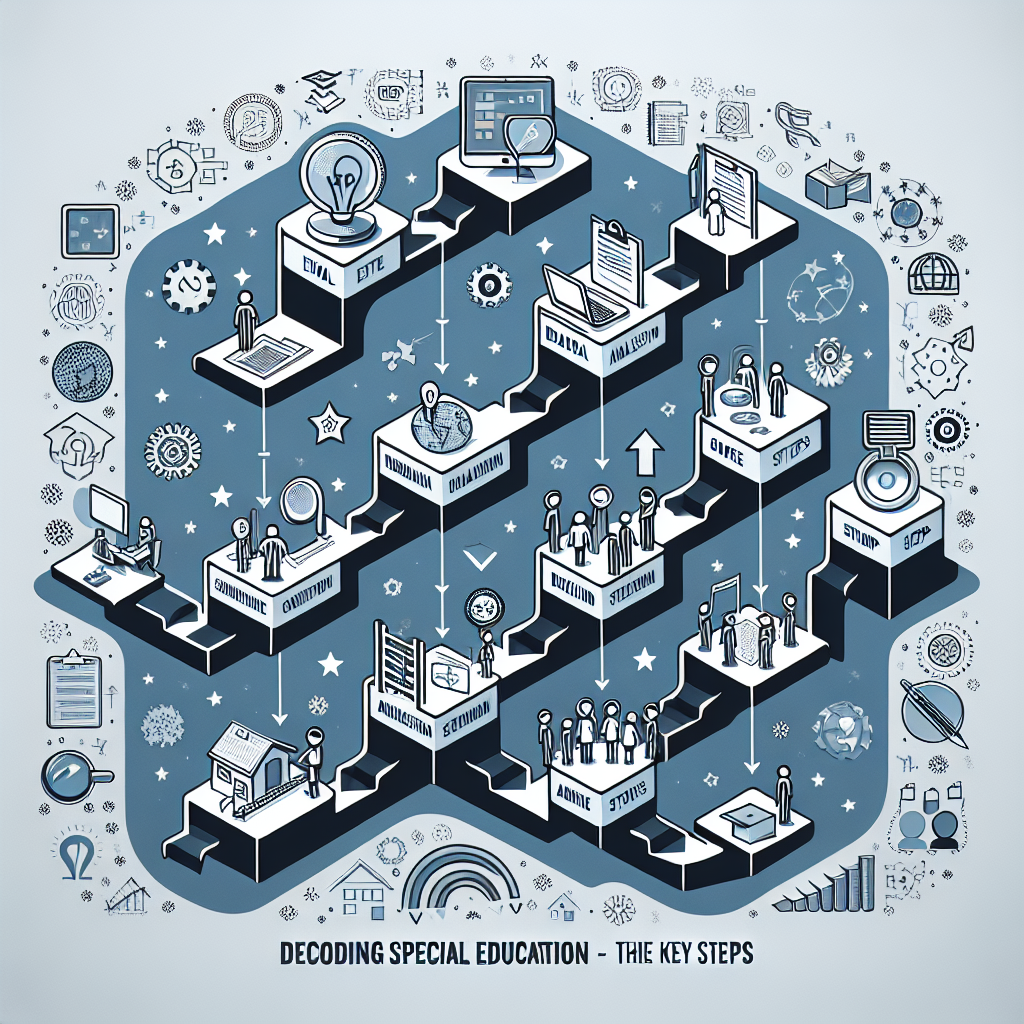
Introduction
In an increasingly diverse educational landscape, the significance of special education assessment cannot be overstated. For educators, parents, and advocates, understanding the nuances of this process is essential for ensuring every child receives the support they deserve. As we dive into the intricacies of decoding special education assessment: understanding the key steps, we will uncover the vital phases involved in this assessment journey and why each plays a crucial role in shaping a child’s educational experience.
The Importance of Special Education Assessment
Special education assessment is not just a series of tests and evaluations; it’s a comprehensive approach aimed at identifying a child’s unique learning needs. It forms the foundation for Individualized Education Programs (IEPs) and helps educators tailor their teaching strategies effectively.
Why Assessments Matter
- Personalization: Assessments help in customizing educational plans based on individual strengths and weaknesses.
- Early Intervention: Early identification of learning disabilities can lead to timely interventions, significantly improving educational outcomes.
- Legal Mandates: Federal laws, such as the Individuals with Disabilities Education Act (IDEA), require that schools conduct comprehensive assessments to provide necessary services.
Key Steps in Special Education Assessment
Decoding special education assessment involves a systematic approach with several key steps. Each step not only adds to the assessment but also enhances our understanding of the learner’s capabilities.
Step 1: Referral for Assessment
The journey begins with a referral. This could originate from teachers, parents, or specialists who suspect that a child may have a learning disability or require special education services.
Real-World Application: Case Study
Case Study 1: Emma’s Journey
Emma, a seven-year-old, frequently struggled with reading and often expressed frustration in class. Her teacher noticed her challenges and referred her for assessment. This referral initiated a pivotal process that eventually led to an IEP tailored to Emma’s needs.
Analysis: Referrals are crucial as they trigger the entire assessment process, ensuring that children like Emma receive the help they need.
Step 2: Comprehensive Evaluation
Once a referral is made, a team of professionals conducts a thorough evaluation. This could include psychological assessments, academic testing, and behavior assessments.
Tables for Clarity
| Type of Evaluation | Description | Purpose |
|---|---|---|
| Psychological Tests | Assess cognitive abilities and emotional state | Determine eligibility for special education |
| Academic Assessments | Evaluate reading, writing, and math skills | Identify areas of need |
| Behavioral Assessments | Analyze social skills and classroom behavior | Understand the child’s interactions |
Step 3: Data Interpretation
After gathering data, teams interpret the results to make informed decisions. Understanding the nuances of this data is vital for effective intervention.
Real-World Application: Case Study
Case Study 2: Liam’s Insights
Liam’s assessment revealed a high IQ paired with specific learning disabilities in reading comprehension. By interpreting the data correctly, his team was able to recommend specialized reading programs that aligned perfectly with his other strengths.
Analysis: This step exemplifies how critical data interpretation is for maximizing a child’s potential.
Step 4: IEP Development
Based on the evaluation data, an Individualized Education Program (IEP) is drafted. This document outlines specific educational goals tailored to the child’s unique needs.
Key Components of an IEP
- Present Levels of Performance: Summary of the child’s current skills.
- Annual Goals: Clear, measurable goals for the year.
- Services Required: Details of the special education and related services needed.
Step 5: Implementation and Monitoring
Once the IEP is developed, it’s time for implementation. Regular monitoring and adjustments ensure the plan remains effective.
Tables for Clarity
| Monitoring Activity | Frequency | Purpose |
|---|---|---|
| Progress Reports | Quarterly | Assess goal achievements |
| Team Meetings | Bi-annual | Review and adjust IEP |
Common Challenges in Special Education Assessment
Navigating the world of special education assessment is not without its challenges. Here are some common hurdles and strategies to overcome them.
Misunderstandings About Learning Disabilities
Many parents and educators may hold misconceptions about what constitutes a learning disability. Comprehensive training and awareness programs can bridge this gap.
Navigating Bureaucracy
The process can often be mired in red tape. Familiarity with the laws and advocacy for the child’s rights can help streamline the process.
Actionable Insights: Empowering Families and Educators
To effectively support learners with special needs, families and educators can take several actionable steps:
- Stay Informed: Knowledge is power. Understanding the laws and processes can empower families in advocating for their children.
- Collaborate: Building relationships among teachers, parents, and specialists fosters a supportive network that can better serve the child’s needs.
- Regular Reviews: Continuous assessments help in adapting educational strategies as the child grows.
Conclusion
Decoding special education assessment: understanding the key steps is a pivotal journey that shapes a child’s educational trajectory. By following these steps diligently, we play a crucial role in transforming challenges into opportunities. Remember, every child has unique potential waiting to be unlocked, and through collaborative efforts, we can ensure that potential shines brightly.
FAQs
1. What is a special education assessment?
A special education assessment is a comprehensive evaluation process that identifies a child’s learning needs and disabilities to provide appropriate support and services.
2. Who can refer a child for assessment?
Referrals can be made by parents, teachers, or other specialists who observe learning challenges in the child.
3. How is data from assessments used?
Data from assessments is used to develop an Individualized Education Program (IEP) that outlines specific goals and services for the child.
4. How often are IEPs reviewed?
IEPs are typically reviewed annually, but progress monitoring happens regularly to ensure goals are being met.
5. What should I do if I disagree with the assessment results?
If you disagree with the results, you can request a second opinion or an independent evaluation to ensure all perspectives are considered.
By fostering a deeper understanding of decoding special education assessment: understanding the key steps, we can ensure that every learner is supported effectively and empowered to reach their full potential.

















